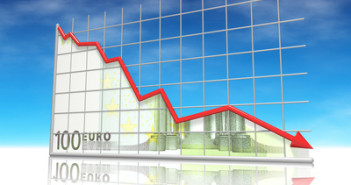EUR/USDÂ began the trading week with a gap lower from the highs it reached on Friday, as the situation in the Ukraine continues deteriorating and is currently taking away the focus from the ECB decision later in the week. The Russian army is effectively in control of the Crimea peninsula and could advance further into other eastern regions of the Ukraine. The large outstanding debt the country worries many. A long list of indicators awaits markets in the new week. Can the euro recover and reach new highs?
Here is a quick update on the technical situation, indicators, and market sentiment that moves euro/dollar.
EUR/USD Technical
- EUR/USD gaped lower below 1.38..
Current range: 1.3773 to 1.38.
Further levels in both directions:

- Below: 1.3773, 1.37, 1.3650, 1.3580, 1.3515, 1.3450 and 1.34
- Above: 1.38, 1.3830, 1.3895, 13915 and 1.40 and 1.4214.
- 1,3830 is strong resistance.
- The previous double top of 1.3773 turns to support.
EUR/USD Fundamentals
- 8:15 Spanish Manufacturing PMI. Exp. 53.2, actual 52.5 points.
- 8:45 Italian Manufacturing PMI. Exp. 53.7, actual 52.3 points.
- 9:00 Euro-zone final manufacturing PMI. Exp. 53.2, actual 53.2 points.
- 13:30 USÂ Personal Income. Exp. +0.2%.
- 13:30 US Personal Spending. Exp. +0.2%.
- 13:30 US Core PCE Price Index. Exp. +0.1%.
- 14:00 ECB president Mario Draghi talks.
- 14:00 US Markit final manufacturing PMI. Exp. 56.7 points.
- 15:00 US ISM Manufacturing PMI. Exp. 52.3 points.
- 15:00 US Construction Spending. Exp. 0%.
*All times are GMT
For more events and lines, see the Euro to dollar forecast.
EUR/USD Sentiment
- Ukraine falling apart: The large nation which has a size bigger than France’s and a population like Spain’s, is falling apart. Russia has taken over the Crimea peninsula and could proceed to other cities in the east of the Ukraine, where the population is pro-Russian. The new government in Kiev has called all reservists, but it doesn’t seem to be willing to fight. Also the West’s action fall short from action, and talk only about economic sanctions against Russia. If the crisis ends with the fall of the new regime in Kiev and a return to a pro-Russian Ukraine, fears about a default will subside. Yet if the tension could continues and turns into a full scale war and/or a division of the Ukraine, the outstanding debt could never be repaid and Europe could suffer a blow. In the meantime, the big winner is the Swiss franc.
- Breathing room for the ECB: The big surprise seems to have shelved plans for a negative deposit rate. With core inflation at 1%, Draghi can fend off criticism. ECB Governing Council member Ignazio Visco said that a negative deposit rate is on the agenda in the upcoming March meeting (currently the rate is at 0%). While the ECB may not take action, this comment certainly weighed on the euro. It joins similar sentiments out of the ECB and some complaints about the euro’s strength from the head of the Eurogroup.
- First NFP hint: The ISM manufacturing PMI is the first hint towards the Non-Farm Payrolls. It is also important to note the employment component. At the moment, the assumption is that the Fed will continue its QE tapering moves also in March, even if the economy is somewhat struggling. Janet Yellen acknowledged the slowdown in the US economy but did not hint about any change in QE tapering. However, forward guidance could certainly be adjusted if the unemployment rate continues falling. The meeting minutes indicated that interest rates are unlikely to rise, even if unemployment drops to 6.5%.
- Germany leading the pack: German retail sales rose by 2.5%, calming fears seen in the previous months. The number of unemployed in the euro-zone’s locomotive also fell more than expected and this joins the strong German GfK Consumer Confidence that reached 8.5 points, its highest level since January 2007. and the upbeat similar sentiments out of the ECB high. Germany is certainly doing well, but others are lagging behind.
- US data improves: A nasty streak of weak US releases ended on Wednesday as New Home Sales jumped by 468 thousand much better than expected. Another positive figure came from durable goods orders, and especially the core numbers. The focus is now on GDP, which is expected to be revised to the downside, from 3.2% to 2.6%.
More:Â Euro-zone inflation: a look to February 2013 can explain the surprise



